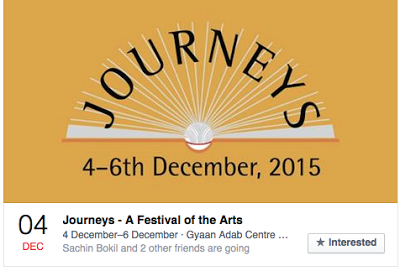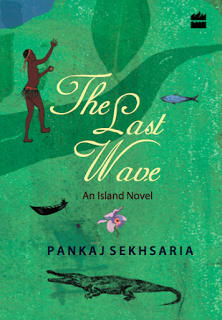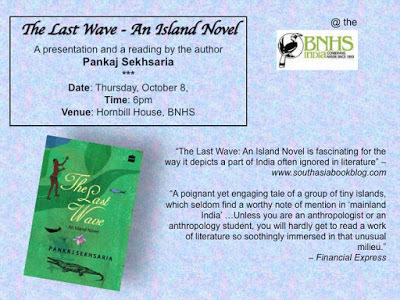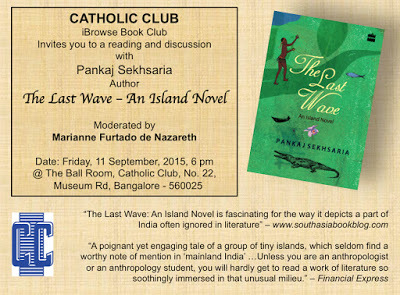Pankaj Sekhsaria's Blog, page 7
December 15, 2015
THREE books on the ANDAMAN & NICOBAR Islands
THREE books on the ANDAMAN & NICOBAR IslandsBy Pankaj Sekhsaria1) Troubled Islands – Writings on the environment and indigenous peoples of the A&N Islands (2003)2) The Jarawa Tribal Dossier – Cultural and Biological Diversity in the Andaman Islands (2010, Jointly edited with Visvajit Pandya)3) The Last Wave- an Island novel (2014)
All three available for a set price of Rs. 500 (Including postage in India)
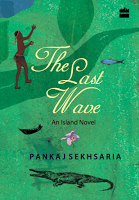 1) The Last Wave- an island novel, published in 2014 by Harper Collins India is a story that has at its heart the ecology, people, and history of the Andaman and Nicobar Islands. Review: http://indianexpress.com/article/lifestyle/books/troubled-waters-7/
1) The Last Wave- an island novel, published in 2014 by Harper Collins India is a story that has at its heart the ecology, people, and history of the Andaman and Nicobar Islands. Review: http://indianexpress.com/article/lifestyle/books/troubled-waters-7/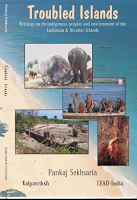 2) Troubled Islands is a joint publication of Kalpavriksh and LEAD India and was published in 2003. It is a collection of articles on the islands I wrote i n the mainstream English media between 1998 and 2003. It has as annexures the Shekhar Singh Report of 2002, Supreme Court orders of 2002 and eight colour plates with pictures from the island
2) Troubled Islands is a joint publication of Kalpavriksh and LEAD India and was published in 2003. It is a collection of articles on the islands I wrote i n the mainstream English media between 1998 and 2003. It has as annexures the Shekhar Singh Report of 2002, Supreme Court orders of 2002 and eight colour plates with pictures from the islandReview: http://www.currentscience.ac.in/Downloads/article_id_099_07_0967_0968_0.pdf
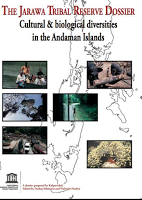 3) The Jarawa Tribal Reserve Dossier is a 215 page book that was published jointly by Kalpavriksh and UNESCO in 2010. It goes into considerable details of the Jarawa Tribal Reserve with papers on the multiple dimensions that make up the reserve. It has also has a set of important annexures that include the full A&N Protection of Aboriginal Tribes Regulation and a set of detailed GIS based maps of the reserve.
3) The Jarawa Tribal Reserve Dossier is a 215 page book that was published jointly by Kalpavriksh and UNESCO in 2010. It goes into considerable details of the Jarawa Tribal Reserve with papers on the multiple dimensions that make up the reserve. It has also has a set of important annexures that include the full A&N Protection of Aboriginal Tribes Regulation and a set of detailed GIS based maps of the reserve. Review: http://www.india-seminar.com/2010/613/613_books.htm
Published on December 15, 2015 05:13
December 1, 2015
The Last Wave @ Journeys - A festival of the arts, Dec 4-6, Pune
Published on December 01, 2015 22:02
September 27, 2015
The Last Wave, at the BNHS, Mumbai, Oct 8
Published on September 27, 2015 08:09
August 21, 2015
The Last Wave - in Bangalore, Sept 11
Published on August 21, 2015 01:45
June 19, 2015
The Last Wave - A Reading in Bangalore, June 25
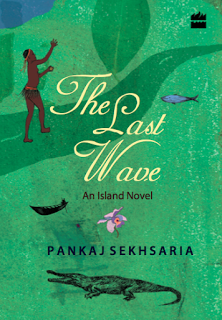 Environment Support Group welcomes you to reading of
Environment Support Group welcomes you to reading ofThe Last Wave
by its author Pankaj Sekhsaria
Thursday, 25th June 2015, @ 4.30 pm – 6.00pm (Coffee/Tea: 4 pm)
Venue: ESG Training Centre, 1575, Outer ring Road,
Banashankari 2nd Stage, Bangalore-560070
A brief about the book:
Harish, the protagonist in this novel, while trying to pick up the threads from a broken marriage and learn to give a new meaning to life reaches Andamans with the help of a friend. In the Islands while passing away time on the pretext of doing an assignment, he comes face to face with the original inhabitants of the Islands the Jarawas. Through the eyes of the protagonist Harish, the readers of Pankaj Sekhsarias novel The Last Wave learn about the history of this Islands, its original inhabitants, the many waves of British, Japanese, and Burmese and India settlers who have tried to run over and change the character of the islands and the litany of issues that are open and festering even today.
Pankaj sums up the core issue, which triggered many a problem afflicting the islands today through his protagonists words in the novel A large group of migrants from mainland India had been allotted the forestland beside these creeks for their houses and for agriculture. Slowly, this wave of humans and their settlements had penetrated deeper and deeper, trashing the forests as David often said, and destroying prime croc habitat. Conflict was inevitable and the eventual loser evident.
The author uses the word “wave” to justify how unequal the battle the Jarawas and their habitat faces against the sea of settlers. The Oceans waves continue their relentless assault on the shoreline, day in and day out, on a never-ending war, as if that is its life's purpose. Unlike the vast shoreline the Jarawas are too little and small to sustain this war forever. The Last Wave sums up this hopeless battle that the Jarawas have fought and lost. The giant waves of the Tsunami in 2004 December, literally ravages the life of the protagonist drowning him back into sadness, into a life devoid of its meaning. Rescued and in hospital bed, he sees the Jarawas hospitalised. The Jarawas who have excellent knowledge and used to handle their own health are now forced to take medication as they have no answer to the modern diseases. A once self-sufficient tribe is now reduced to begging and pleading for help in broken hindi, an alien language. The protagonist while recovering in the hospital is grappling with his personal loss, and comes face to face with realisation that perhaps the Jarawas too have been inundated by a different sort of giant wave and lost the battle. This juxtaposition of the individual loss of the protagonist with the plight of a vanquished race makes for a compelling ending.
Pankaj in his novel brings out the prevailing sentiments among the settlers in the Islands they can't understand, why they should be denied legitimate access to precious resources because of a few naked junglees. Too often conflict starts because we believe that there is only one right way and that is the path we are following. Out of this belief, people often sympathize and pity others who follow a different path. Pankaj dwells on this theme in his novel, captured in what one of the settler says “..if we are allowed to continue here, well even become good friends we can even make these junglees humans. Well civilize them. This is what the government also wants now, isn't it?” The author tells us that the protagonist Harish felt a deep sense of wonder at the life of the Jarawa. It must be extremely tough, he thought to himself, and yet it seems so simple - just the elements and the people. Perhaps the author is conscious of the fact that only if the public appreciates this perspective they will start respecting the Jarawas instead of having pity.
The author has successfully managed to sew together real life stories to his tale and the combination of facts and fiction on an ecological backdrop forms a rich tapestry which will enrich the knowledge of the readers, while keeping them enthralled with its lucidity. Whatever he couldn't achieve through his many articles, letters, legal cases and activism, may probably be achieved by his novel in making a new group of people aware about the injustice to the Jarawas and perhaps change the tide in their favour.
Published by Harper Collins, The Last Wave (290 pages) is priced at Rs. 350/-. and is available with online retail are lower prices.
About the Author: Pankaj Sekhsaria has been working with Kalpavriksh for the last 12 years. His main engagement has been with issues in the Andaman and Nicobar Islands - with research, networking, advocacy and legal intervention. He also edits the bi monthly newsletter the Protected Area Update and writes regularly for the Indian media on issues of wildlife and conservation. He has a Bachelors degree in Mechanical Engg from the Pune University and a Master's Degree in Mass Communication from Jamia Milia Islamia, New Delhi. He is presently registered for a PhD programme in Science, Technology and Society Studies at the Maastricht University in the Netherlands.
RSVP:: shashi@esgindia.org Tel:91-80-26713560/61
Published on June 19, 2015 00:06
May 19, 2015
காட்டுவாசியாக இருப்பது அவர்களுடைய உரிமை! - தி இந்து
The Last Wave - In The Hindu, Tamil, September 2014
காட்டுவாசியாக இருப்பது அவர்களுடைய உரிமை! - தி இந்து
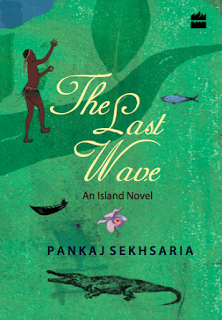
காட்டுவாசியாக இருப்பது அவர்களுடைய உரிமை! - தி இந்து

Published on May 19, 2015 08:45
May 18, 2015
Parikshit Suryavanshi: पंकज सेक्सारिया : एक संवेदनशील संशोधक
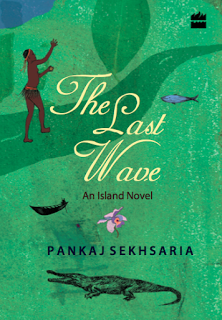 Parikshit Suryavanshi: पंकज सेक्सारिया : एक संवेदनशील संशोधक: पंकज सेक्सारिया हे एक संशोधक, लेखक, फोटोग्राफर, अभ्यासक आणि पर्यावरण क्षेत्रातील सक्रीय कार्यकर्ते आहेत . पर्यावरण आणि वन्यजीव संवर्धन...
Parikshit Suryavanshi: पंकज सेक्सारिया : एक संवेदनशील संशोधक: पंकज सेक्सारिया हे एक संशोधक, लेखक, फोटोग्राफर, अभ्यासक आणि पर्यावरण क्षेत्रातील सक्रीय कार्यकर्ते आहेत . पर्यावरण आणि वन्यजीव संवर्धन...
Published on May 18, 2015 01:48
May 16, 2015
The Last Wave, A Million Tsunamis
The Last Wave, A Million Tsunamis
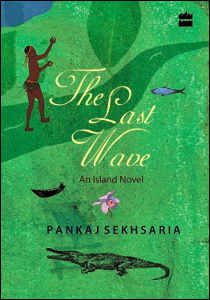 by Sucharita Dutta-Asane http://www.asiancha.com/content/view/...
by Sucharita Dutta-Asane http://www.asiancha.com/content/view/...
Pankaj Sekhsaria, The Last Wave: An Island Novel, Harper Collins, 2014. 312 pgs.
A but-of-course smile touched his lips. 'I'll find my question…' Harish whispered to the empty room, as he saw the semblance of a destination emerging through all the clutter and confusion that surrounded him. 'And I'll find the answer too.' (The Last Wave)
Pankaj Sekhsaria's debut novel resonates with questions; the answers are not as easy to find. We meet, the author and I, for a discussion of the book before a small but involved audience. Having written scores of articles on the Andaman Islands and related issues, what prompted the academic-journalist-activist-researcher to write a novel? Did the writing of this book help him find answers that may have evaded him in his activist avatar?His answer is simple and sets the tone for the rest of the discussion. "It has given rise to more questions," he says.***At the heart of the The Last Wave, a novel of questions and concerns, introspection and exploration, of escape and heartbreak, are the Jarawas, the ancient and original inhabitants of the islands. We see them fleetingly, sometimes close to their territory, sometimes outside it, but never for too long. In a way, this captures the perception others have of them and escalates curiosity. The novel reflects this curiosity through the abject interest of outsiders and tourist companies in the Jarawas as specimens. Along with curiosity, close on its heels, comes a pervasive sense of guilt that subtly underlines the narrative tone. Not individual guilt, but the collective culpability of those who seek to know more about the Jarawas, at different levels and in different ways, the guilt that arises out of intrusion and voyeurism. The deuteragonists of this novel—Harish the aimless well-wisher, Seema the local-born woman exploring her roots, Uncle Pame the Karen boatman and other scientists, researchers and journalists—exist at the fringes of the central theme woven around the Jarawas and the effect of the outside world on them, their island and their needs.The fact that India administers the Andaman and Nicobar Islands is a quirk of historical fate, a legacy left behind by the British who used it primarily for penal purposes. Located far from the mainland, their geological and topographical context and their demographic habitation on-the-fringes give them a unique identity and requirements. Largely invisible to the residents and visitors to the islands, the Jarawas began to slowly make themselves seen, giving up their traditional defensive hostility and coming out of their forests; sometimes for banana and tobacco consignments, sometimes for casual and amused glimpses of life outside their forests, sometimes, as in the case of Tanumei and Erema, for medical intervention that was once redundant to the self-sufficient and proud race.The Andaman Trunk Road that cuts through the virgin forests connecting the South Andaman and Middle Andaman threatens to bring this outside world right to the edges of the Jarawa "infested: forests: "''The Jarawas ... are a lost cause anyway. It's too late. The day their hostility went, when that Tanumei fellow was taken to the Port Blair and brought back—the Jarawas lost it. They stand no chance now. In some ways, it's the process of evolution.'" The narrative sways between possibilities thrown up by various people given their specific interests. Evolution and the modernisation of the "jungle" are the ones most touted—by settlers and government officials. Amid varying and shifting ideologies in which the Jarawas themselves seem to have no say, is it possible at all to create an interface that enables negotiation, or is it completely non-negotiable, left at best to the inevitable cycle of evolution? ***The book cover carries the picture of an orchid, Papilionanthe Teres. It stands out, pink and prominent, against the green background with its assortment of images in brown. The flower has its own interesting story embedded in this book of many stories. Along long stretches of the Andaman Trunk Road, the flower blooms only on the logged side of the road; the side with unlogged forests is devoid of its pink beauty. Since the orchid grows only where it gets plentiful sunlight, it is absent from the pristine, "undisturbed forests." Its profusion in stretches of organised tree felling and its complete absence in the primitive forests creates its own narrative of intrusion and destruction. The orchid is metaphor and reality interlaced in a larger narrative that explores the usual tropes of duality—native/outsider, myth/reality, progress/status quo.The author compares the onslaught of the outside world on the Jarawas to a "relentless tsunami." If the tsunami is relentless, any subsequent wave could be the last wave. At the level of metaphor, the possibilities are varied. At the level of reality, something will give way, sooner rather than later. Will the Jarawas find themselves submerged by the lure of "modern" civilisation and its movies, language, corruptibility and illnesses?This is the question that looms in the background, overshadowing the other narrative of Harish and his bildungsroman-esque search for meaning, for answers to questions he cannot articulate. Depressed and lost after a broken marriage, Harish accompanies his friend to the Andaman Islands on an assignment and is eventually drawn to its various stories, facts and the fascinating island people, especially the Jarawas and their apparent plight in the face of this "tsunami." Seema is a local-born woman, a descendant of the colony's prisoners on the island. She returns to the island to trace her roots, research and perhaps archive its many narratives. The novel also has an assortment of other characters, who do not drive the plot but exist to provide information and points of view. The focus on the anthropological and socio-cultural issues is constant, unwavering; emotions, incidents and characters are left suspended, unresolved, not necessarily by chance or deliberately, but by these overriding concerns. The stories of Seema and Harish are not important; David's crocodile research is a device, as is the botanist SK's rant about tree felling and the replacement of pristine forests with plantation forests. What is important is the setting. It is the protagonist, the one that evokes response, throbs with a life of its own as the narrator swings the lens from one corner of the islands to the other, as well as to the turtle nesting beach on Great Nicobar where the tsunami of 2004 wrecks the island. Harish is saved, miraculously, to end up in a hospital bed and ponder over questions. Story and plot give way to complex issues, yet the title seems to reduce the focus to only one story, the one less important—that of Harish. The book needed tighter editing. It is easy to tick off the list: wafer thin plot, perspective shift, loosely crafted characters, lack of an emotional core, restrictive title. Yet, The Last Wave is a sensitive book meant to sensitise, to raise issues about a place that literature has largely overlooked. It is a rich assemblage of the smaller narratives of an island's past, of lives threatened with extinction, of attempts to appropriate and to subsume, of settler-native conflict, of bureaucratic ham-handedness, good intentions and arbitrary decisions, of loss and love. The novel is strongly reminiscent of Amitav Ghosh's The Hungry Tide. Was he a major influence, I ask the author. The Hungry Tide made The Last Wave seem possible, Sekhsaria says. Having worked in the Andaman Islands for over two decades, Pankaj knows his subject well. It reflects in his writing of the anthropological, sociological and cultural elements, and it reflects on his face as he explains a slide show on the islands. As the surreal light of the slideshow fades from his face, it is replaced with the glow of giving us "a story that needed to be told". The Last Wave is his eloquent recountal of life on the Andaman Islands—the myths and realities, promises and compromises, hopes and disappointments, histories and meta-histories.
 by Sucharita Dutta-Asane http://www.asiancha.com/content/view/...
by Sucharita Dutta-Asane http://www.asiancha.com/content/view/...Pankaj Sekhsaria, The Last Wave: An Island Novel, Harper Collins, 2014. 312 pgs.
A but-of-course smile touched his lips. 'I'll find my question…' Harish whispered to the empty room, as he saw the semblance of a destination emerging through all the clutter and confusion that surrounded him. 'And I'll find the answer too.' (The Last Wave)
Pankaj Sekhsaria's debut novel resonates with questions; the answers are not as easy to find. We meet, the author and I, for a discussion of the book before a small but involved audience. Having written scores of articles on the Andaman Islands and related issues, what prompted the academic-journalist-activist-researcher to write a novel? Did the writing of this book help him find answers that may have evaded him in his activist avatar?His answer is simple and sets the tone for the rest of the discussion. "It has given rise to more questions," he says.***At the heart of the The Last Wave, a novel of questions and concerns, introspection and exploration, of escape and heartbreak, are the Jarawas, the ancient and original inhabitants of the islands. We see them fleetingly, sometimes close to their territory, sometimes outside it, but never for too long. In a way, this captures the perception others have of them and escalates curiosity. The novel reflects this curiosity through the abject interest of outsiders and tourist companies in the Jarawas as specimens. Along with curiosity, close on its heels, comes a pervasive sense of guilt that subtly underlines the narrative tone. Not individual guilt, but the collective culpability of those who seek to know more about the Jarawas, at different levels and in different ways, the guilt that arises out of intrusion and voyeurism. The deuteragonists of this novel—Harish the aimless well-wisher, Seema the local-born woman exploring her roots, Uncle Pame the Karen boatman and other scientists, researchers and journalists—exist at the fringes of the central theme woven around the Jarawas and the effect of the outside world on them, their island and their needs.The fact that India administers the Andaman and Nicobar Islands is a quirk of historical fate, a legacy left behind by the British who used it primarily for penal purposes. Located far from the mainland, their geological and topographical context and their demographic habitation on-the-fringes give them a unique identity and requirements. Largely invisible to the residents and visitors to the islands, the Jarawas began to slowly make themselves seen, giving up their traditional defensive hostility and coming out of their forests; sometimes for banana and tobacco consignments, sometimes for casual and amused glimpses of life outside their forests, sometimes, as in the case of Tanumei and Erema, for medical intervention that was once redundant to the self-sufficient and proud race.The Andaman Trunk Road that cuts through the virgin forests connecting the South Andaman and Middle Andaman threatens to bring this outside world right to the edges of the Jarawa "infested: forests: "''The Jarawas ... are a lost cause anyway. It's too late. The day their hostility went, when that Tanumei fellow was taken to the Port Blair and brought back—the Jarawas lost it. They stand no chance now. In some ways, it's the process of evolution.'" The narrative sways between possibilities thrown up by various people given their specific interests. Evolution and the modernisation of the "jungle" are the ones most touted—by settlers and government officials. Amid varying and shifting ideologies in which the Jarawas themselves seem to have no say, is it possible at all to create an interface that enables negotiation, or is it completely non-negotiable, left at best to the inevitable cycle of evolution? ***The book cover carries the picture of an orchid, Papilionanthe Teres. It stands out, pink and prominent, against the green background with its assortment of images in brown. The flower has its own interesting story embedded in this book of many stories. Along long stretches of the Andaman Trunk Road, the flower blooms only on the logged side of the road; the side with unlogged forests is devoid of its pink beauty. Since the orchid grows only where it gets plentiful sunlight, it is absent from the pristine, "undisturbed forests." Its profusion in stretches of organised tree felling and its complete absence in the primitive forests creates its own narrative of intrusion and destruction. The orchid is metaphor and reality interlaced in a larger narrative that explores the usual tropes of duality—native/outsider, myth/reality, progress/status quo.The author compares the onslaught of the outside world on the Jarawas to a "relentless tsunami." If the tsunami is relentless, any subsequent wave could be the last wave. At the level of metaphor, the possibilities are varied. At the level of reality, something will give way, sooner rather than later. Will the Jarawas find themselves submerged by the lure of "modern" civilisation and its movies, language, corruptibility and illnesses?This is the question that looms in the background, overshadowing the other narrative of Harish and his bildungsroman-esque search for meaning, for answers to questions he cannot articulate. Depressed and lost after a broken marriage, Harish accompanies his friend to the Andaman Islands on an assignment and is eventually drawn to its various stories, facts and the fascinating island people, especially the Jarawas and their apparent plight in the face of this "tsunami." Seema is a local-born woman, a descendant of the colony's prisoners on the island. She returns to the island to trace her roots, research and perhaps archive its many narratives. The novel also has an assortment of other characters, who do not drive the plot but exist to provide information and points of view. The focus on the anthropological and socio-cultural issues is constant, unwavering; emotions, incidents and characters are left suspended, unresolved, not necessarily by chance or deliberately, but by these overriding concerns. The stories of Seema and Harish are not important; David's crocodile research is a device, as is the botanist SK's rant about tree felling and the replacement of pristine forests with plantation forests. What is important is the setting. It is the protagonist, the one that evokes response, throbs with a life of its own as the narrator swings the lens from one corner of the islands to the other, as well as to the turtle nesting beach on Great Nicobar where the tsunami of 2004 wrecks the island. Harish is saved, miraculously, to end up in a hospital bed and ponder over questions. Story and plot give way to complex issues, yet the title seems to reduce the focus to only one story, the one less important—that of Harish. The book needed tighter editing. It is easy to tick off the list: wafer thin plot, perspective shift, loosely crafted characters, lack of an emotional core, restrictive title. Yet, The Last Wave is a sensitive book meant to sensitise, to raise issues about a place that literature has largely overlooked. It is a rich assemblage of the smaller narratives of an island's past, of lives threatened with extinction, of attempts to appropriate and to subsume, of settler-native conflict, of bureaucratic ham-handedness, good intentions and arbitrary decisions, of loss and love. The novel is strongly reminiscent of Amitav Ghosh's The Hungry Tide. Was he a major influence, I ask the author. The Hungry Tide made The Last Wave seem possible, Sekhsaria says. Having worked in the Andaman Islands for over two decades, Pankaj knows his subject well. It reflects in his writing of the anthropological, sociological and cultural elements, and it reflects on his face as he explains a slide show on the islands. As the surreal light of the slideshow fades from his face, it is replaced with the glow of giving us "a story that needed to be told". The Last Wave is his eloquent recountal of life on the Andaman Islands—the myths and realities, promises and compromises, hopes and disappointments, histories and meta-histories.
Published on May 16, 2015 05:42
May 15, 2015
The Last Wave - an island novel ...in book stores in cities across North India:
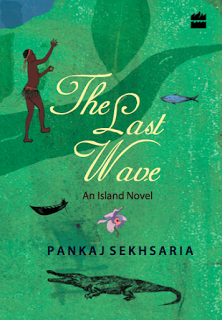
AGRA
Modern Book Depot, Sadar Bazar, Agra Cantt
http://www.lonelyplanet.com/…/shopp…/books/modern-book-depot
---
CHANDIGARH
The Browser, Sector 8C
https://www.facebook.com/browser8
Capital Book Depot
Sector 17,
English Book Depot
https://www.facebook.com/pages/The-English-Book-Shop/189858247719974
---
DEHRADUN
Book World
Natraj Publishers
English Book Depot
---
JAIPUR
Barwara Book House, Civil Lines, Jaipur
---
JODHPUR
Rathis Media Centre, Ajit Colony, Jodhpur
---
KANPUR
National Book House, Kanpur
---
LUCKNOW
Universal Book Seller
and Universal Book Dist Co.
---
MUSSOORIE
Cambridge Book Depot , The Mall, Mussoorie
http://timesofindia.indiatimes.com/…/articlesh…/41116908.cms
---
VARANASI
Universal Book Co.
-----
If there are other stores or cities where the book is already available or should be, please surely let me know!
Published on May 15, 2015 04:45
May 10, 2015
The Last Wave - Available in Delhi at ...
Gurgaon: OBS, Midland, Om Book Shop (Ambi Mall)
Noida: OBS
Khan Market: Bahri Sons, Full Circle,
South Extn: Midland
Aurobindo Market: Midland
GK: Full Circle
Hauz Khas: Midland
Saket: Bahri Sons
CP: Jain Book Depot, Amrit Books
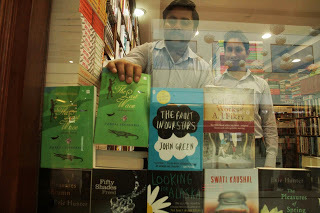 @Bahri Sons, Saket, May 2014
@Bahri Sons, Saket, May 2014 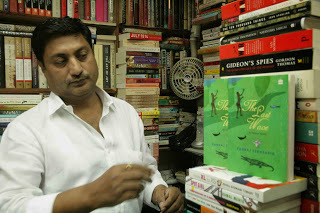 @ Midland, Aurobindo Market, May 2014
@ Midland, Aurobindo Market, May 2014 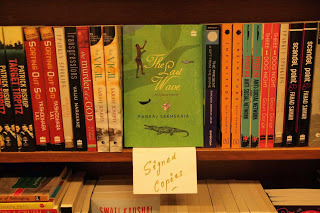 Full Circle, Khan Market, also May 2014
Full Circle, Khan Market, also May 2014
Published on May 10, 2015 23:16


